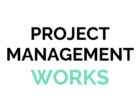“A wealth of information creates a poverty of attention.” Herbert A. Simon
Given that it’s called Information Technology, is it surprising that many organisations are unknowingly compromising their strategic business and IT Project effectiveness through information overload?
Actually, given the amount of data that even the simplest IT Project can generate, it is hardly surprising at all. For some, there is literally too much information to cope with and often the first casualty is the very processes which you rely on to deliver business strategy. Many IT infrastructures are creaking under the weight.
If information is the lifeblood of IT Project Management, then processes are the arteries – and they are getting clogged. Ask your doctor – that never ends well.
The problem comes when you need to do something within your IT Project. Your effectiveness can be severely hampered if you cannot find, for example, the current specification on how a process should be implemented and executed, because multiple copies have been stored in different places across your organisation’s infrastructure or updates have been made and redundant obsolete copies not deleted. By the time you work out where you’re at, the benefits of having the process can either be diluted or even lost altogether.
It’s frustrating too, from a user point of view. It is demoralising to waste time searching for the latest on a process, to find it, implement it and then discover that the copy you found has been updated a number of times and you started the process three steps behind the current spec! It can lead to turnover of talent.
Worse, though, is the impact it can have on your reputation with clients. You want to create the impression that you are a ‘hit the ground running’ sort of a firm who gets the job done in an efficient manner. You can’t be that firm if you have to hunt for the latest process update or spec before you get started.
How did we get here?
As a species, we are natural hoarders. You only have to look at your kitchen drawer full of nearly dead batteries to see that. It can be hard to throw things away, after all, you never know when you might an AA battery with just enough juice to illuminate a torch for a minute and a half! The problem comes when you come to look in that drawer to find something that you do need – the menu for the local takeaway, for example. Vital time is lost rooting through the assorted hair bobbles, old house keys, foreign currency and AWOL dominoes before you discover someone has pinned it to the corkboard on the kitchen wall.
IT Project processes are like that kitchen drawer but it’s multiple copies of documents and updated process specs that are slowing them down.
As with most compromised IT processes, systems and kitchen drawers, the fault lies with us humans. Either in the decisions, we make at the design stage, changes during the life cycle or simply the way we store or, more often, hoard information.
Before we look at solutions though, a word of caution.
With the commoditisation of IT, at some firm’s department heads are grappling with this. After all, many now buy IT solutions to meet their departmental needs, it’s perhaps not unreasonable they source the solution when it gets a little messy. The problem is, across a company, a number of different systems can be implemented at department level with little thought for impact on other areas of the organisation and the systems that they may have introduced. Multiple systems trying to sort the problems caused by multiple documents. This, in turn, becomes difficult to manage and inevitably processes suffer further. As one Australian Project Manager friend put it, “You don’t get bitten by a venomous spider and then chase it through the forest with a stick! That drives the poison further into your blood stream. You get to the docs and get the antidote!”
Process is so central to your strategy that that is needs a centralised solution.
So what is the solution?
If this sounds like an IT project, it’s because …well … it is one. A crucial one at that! Your organisation’s top Project Management talent needs parachuting in on this one. Your Project or Programme team who design and deliver IT projects in a timely, on-budget and business case manner are the best people to lead this and your PMO is best placed to ensure robust governance.
Quite often, though, if you haven’t spotted problems working within your systems, you may overlook them when you come to work on them. So it’s good to have an independent second pair of eyes look at your processes and how you store the information they rely on. As part of an infrastructure assessment, your current infrastructure and business needs can be measured to assess the feasibility of, for instance, a move to cloud services. When choosing a partner for this, select someone who is truly independent and impartial who will give you advice that is not driven by a sales agenda.
Whether you take independent advice or take on the challenge yourself, the end result should be that users have straightforward access to information pertaining to each and every process in your organisation. A repository of the up to date DNA of your project department, your company and their processes – a single storage centre for single, up-to-date copies of everything you are and do.
And then … you have to commit to keeping it tidy!
Aligning IT generally to business strategy and goals can achieve savings and this is especially true when it comes to process management. As IT evolves into a position where it becomes the driving force of business strategy, information is king.We must commit to not letting that wealth of information create a poverty of attention when it comes to our IT processes.
Find out more about Stoneseed’s PMO Services, as well as PMO resources, we offer PMO Consultancy so if you wish to refine and improve your processes contact us to learn more.

